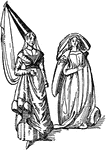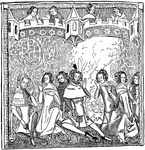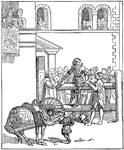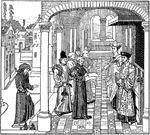Search for "feudalism"
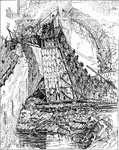
Movable Tower
A movable tower was used o attack a city in the medieval ages. It "was rolled up to the wall of the…
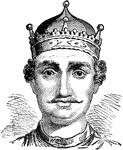
William I of England
William I of England (1027 – 9 September 1087), better known as William the Conqueror, was Duke…

Montesquieu
A French social commentator who articulated the theory of separation of powers in government.
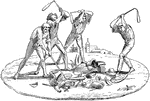
The Destruction of Feudalism
"A contemporary cartoon representing the French people hammering to pieces with their flails all the…

The Ceremony of Homage
"A fief was conferred by a very solemn and peculiar ceremony called homage. The person about to become…

Arming a Knight
"At the age of twenty-one the squire became a knight, being then introduced to the order of knighthood…


